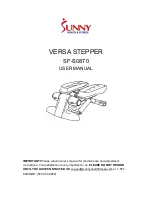
Faxing
20
2
Placing Originals
In this manual originals can mean a
single or multiple page document.
You can place your originals either in
the optional Document Feeder (ADF)
or on the exposure glass. Some types
of originals are unsuitable for the op-
tional Document Feeder (ADF) so
they must be placed on the exposure
glass.
Which way you place your original
depends on its size and whether you
are using the optional Document
Feeder (ADF) or the exposure glass.
❖
❖
❖
❖
How to place A4, B4, A3, 8
1
/
2
"
××××
11",
8
1
/
2
"
××××
14" and 11"
××××
17" size originals
❖
❖
❖
❖
How to place A4, A5 and B5 size orig-
inals
Limitation
❒
A5 size documents are not de-
tected on the exposure glass.
Place A5 size documents in the
o pt io nal Do cum en t F eed er
(ADF).
⇒
p.26 “Original Sizes
Difficult to Detect”
Note
❒
When you place originals on the
o pt io nal Do cum en t F eed er
(ADF) as shown in the above il-
lustrations, the Fax Header will
be printed on the received faxes
at the destination as follows:
• *1 On the top of the fax
• *2 On the left side of the fax
❒
When sending a fax, the image
output at the other end depends
on the size and direction of pa-
per used in the destination's ter-
minal. If the destination does
not use paper of the same size
and direction as that of the orig-
inal, the fax image may be re-
duced in size, trimmed at both
edges, or divided into two or
more sheets. When sending an
important original, we recom-
mend that you ask the receiver
about the size and direction of
the paper used in their terminal.
❒
When sending an original of an
irregular (i.e. non-standard)
size or part of a large original,
you can specify the scan area
precisely.
⇒
p.23 “Setting a
Scan Area”
JpCF-Fax_AE_Bsc-f2_FM.book Page 20 Thursday, January 9, 2003 10:29 PM
















































